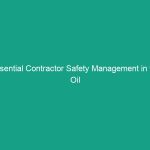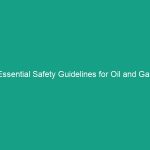Introduction
Good morning team! Today, we are going to discuss a critical aspect of our Safety protocols: Essential Spotter Safety at Work Guidelines to Avoid Critical Risks. Understanding and applying these guidelines is vital not only for your safety but also for the safety of your coworkers. Spotters play an essential role in ensuring a safe working Environment, especially when operations involve heavy machinery or complex tasks. Let’s dive into why these guidelines are important and how they can prevent accidents in our workplace.
Understanding Essential Spotter Safety
So, what exactly is spotter safety? Spotter safety refers to the practices and Procedures that individuals designated as spotters must follow to ensure safe operations in workplaces, especially in environments where visibility may be limited. Spotters help guide operators of heavy machinery to prevent collisions and accidents.
Adhering to spotter Safety Guidelines has a direct impact on our daily operations. It minimizes the risk of accidents, which can lead to injuries or even fatalities. A common misconception is that spotters only serve as “extra eyes” and that their role is not as critical as it appears. In reality, their presence and adherence to safety protocols can significantly prevent accidents and protect lives.
Key Hazards, Risks, and Safety Considerations
Several specific Hazards and risks are associated with spotter safety:
- Limited Visibility: Heavy machinery often has blind spots, making it crucial for spotters to be vigilant.
- Communication Breakdowns: Ineffective communication between operators and spotters can lead to accidents.
- Environmental Factors: Weather conditions and uneven terrain can increase the risks associated with operating heavy equipment.
Ignoring these safety protocols can lead to severe consequences, including injuries, property damage, and even loss of life. For example, there have been instances where a spotter was not positioned correctly, leading to a worker being struck by a moving vehicle. This highlights the importance of following established guidelines.
Best Practices, Procedures, & Actionable Advice
To ensure spotter safety, here are some Best Practices and procedures every employee should follow:
- Clear Communication: Always establish clear signals between operators and spotters before starting operations. Use hand signals or radios to maintain constant communication.
- Positioning: Spotters should position themselves in a spot where they have a clear view of the Operation and can easily communicate with the operator.
- Stay Alert: Spotters must remain focused, avoiding distractions during operations. Taking your eyes off the task can lead to accidents.
- Know the Equipment: Understanding the machinery being operated is crucial. Spotters should be trained on the specific equipment and its limitations.
Let’s consider a real-world incident: A crew was operating a crane on a construction site. The spotter, while focused on communicating with the operator, failed to notice a worker walking into the operating zone. This resulted in a near-miss situation that could have been avoided with proper communication and alertness. Always remember: your awareness can save lives.
Regulations, Standards, and Compliance
Compliance with safety Regulations is not just a legal requirement; it’s a moral obligation. The Occupational Safety and Health Administration (OSHA) provides guidelines that outline the responsibilities of spotters in various industries. Familiarizing yourself with these Standards helps us maintain a safe work environment.
For example, osha 1926.1428 specifically addresses the requirements for signal persons and their responsibilities in construction operations. Understanding these standards is essential for compliance and helps protect employees from potential hazards.
Employee Engagement & Discussion
Let’s take a moment to reflect on our experiences. What safety challenges have you encountered related to spotter safety in your work? How did you or your team address those challenges? Sharing our experiences can help us learn and improve our safety practices as a team.
Conclusion & Key Takeaways
In summary, the Essential Spotter Safety at Work Guidelines to Avoid Critical Risks are vital for ensuring a safe working environment. Always prioritize clear communication, proper positioning, and staying alert while performing your duties as a spotter. Remember that compliance with safety regulations not only protects you but also your coworkers.
Thank you for your attention today and for your commitment to creating a safer workplace. Let’s continue to prioritize safety in everything we do and make our workplace safer for everyone!


